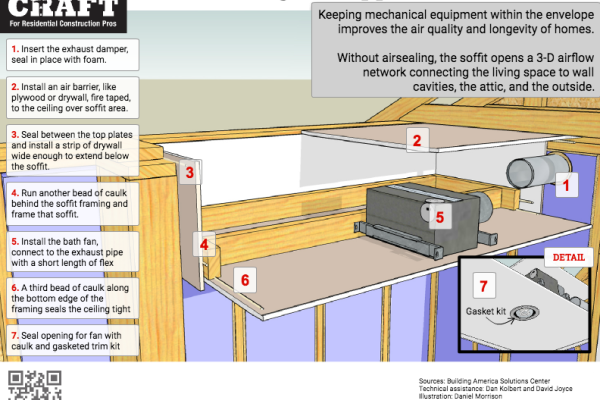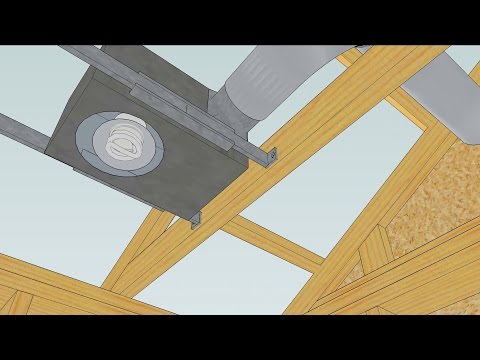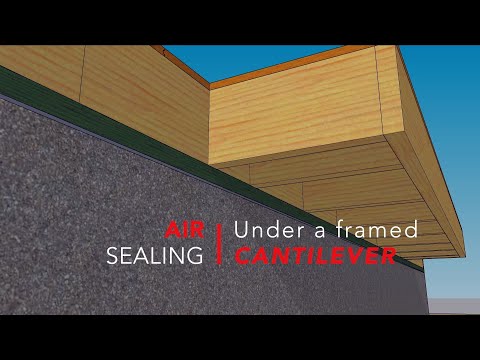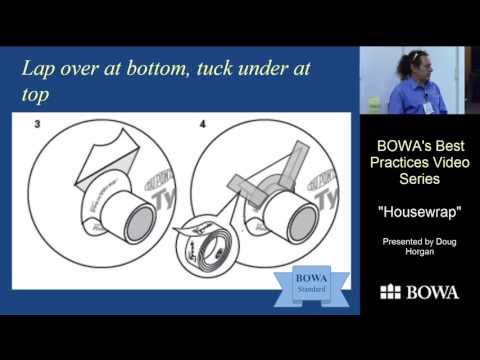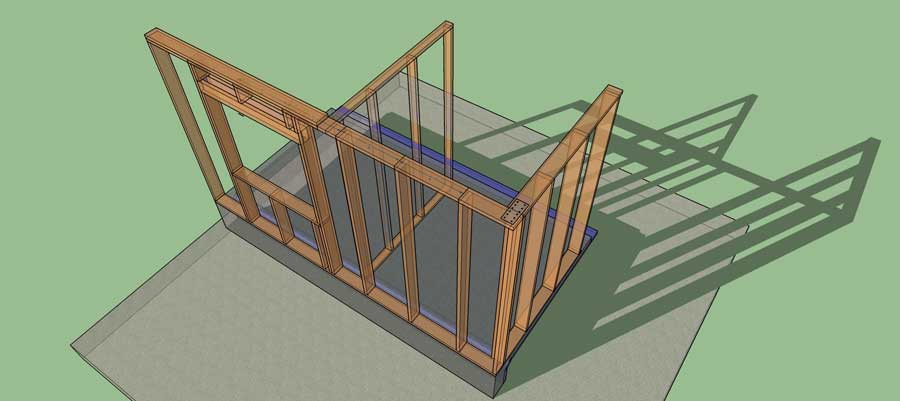Keep mechanical equipment within the envelope to improve the quality of houses and homes
Any responsible bathroom builder puts a bath fan in the bathroom. Usually over the tub and shower because that’s where most of the moisture is.
This is often done in the ceiling framing and vented out through a sidewall or the roof. But that’s not always possible for one reason or another, so a lot of builders add a dropped soffit for the fan and ductwork.
Once the drywall is up, the soffit is out of sight and out of mind. But it is really a 3-dimensional airflow network that connects the living space to wall cavities, the attic, and the outside.
There are many ways to do it better, depending on the construction sequence, and energy efficiency can be challenging to the sequence. Some builders begin at the end: by installing an airtight exhaust port for the fan installers to connect to.
Step by step:
- Cut a hole in the house wrap and then the wall sheathing.
- Before inserting the exhaust port into the wall, seal the back of the flange to the house wrap and then slide it in and tape the edges being careful to overlap in the right sequence. Now, we can go inside and do some work.
- It is also very important to insulate and air seal before installing the tub, and we have a video about that.
- Install an air barrier, like plywood or drywall, fire taped, to the ceiling over the soffit area.
- To keep the walls airtight, run a bead of caulk between the top plates and install a strip of drywall wide enough to extend a couple inches below the soffit.
- Run another bead of caulk behind the soffit framing and frame that soffit.
- Whenever the sub installs the bath fan, have them use a short length of flex duct to connect to the exhaust pipe.
- A third bead of caulk along the bottom edge of the framing seals the ceiling tight—except for the gaping hole that you just cut.
- Seal the perimeter of the drywall opening with caulk, install a gasketed trim kit and wait for the drywall crew to finish up.
Compartmentalizing the air barrier builds redundancy into the envelope, and adds quality and performance to your houses.
—Thanks to David Joyce and Carl Seville for technical help on this detail
